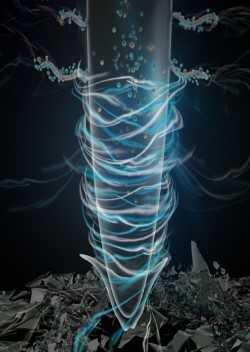UMass Amherst, Shandong University offer one of the first nanoplastics studies in land plants

Credit: UMass Amherst/Xing lab
Shandong University/Yuan and Wang labs
AMHERST, Mass. – As concern grows among environmentalists and consumers about micro- and nanoplastics in the oceans and in seafood, they are increasingly studied in marine environments, say Baoshan Xing at the University of Massachusetts Amherst and colleagues in China. But “little is known about the behavior of nanoplastics in terrestrial environments, especially agricultural soils,” they add.
Xing, an environmental scientist at UMass Amherst’s Stockbridge School of Agriculture, and collaborators at Shandong University, China, point out that until now, there had been no direct evidence that nanoplastics are internalized by terrestrial plants.
They state, “Our findings provide direct evidence that nanoplastics can accumulate in plants, depending on their surface charge. Plant accumulation of nanoplastics can have both direct ecological effects and implications for agricultural sustainability and food safety.” Both positively and negatively charged nanoplastics accumulate in the commonly used laboratory model plant, Arabidopsis thaliana.
Xing adds that widespread global use and persistence in the environment result in an “enormous” amount of plastic waste. He says, “Our experiments have given us evidence of nanoplastics uptake and accumulation in plants in the laboratory at the tissue and molecular level using microscopic, molecular and genetic approaches. We have demonstrated this from root to shoot.” Details are in Nature Nanotechnology this week.
Xing points out that nanoplastic particles can be as small as a protein or a virus. Weathering and degradation change plastic’s physical and chemical properties and imparts surface charges, so environmental particles are different from the pristine polystyrene nanoplastics often used in the lab. “This is why we synthesized polystyrene nanoplastics with either positive or negative surface charges for use in our experiments.”
He helped to design the study, interpret the results, evaluate and revise the manuscript while a large team at Shandong University led by Xian-Zheng Yuan and Shu-Guang Wang conducted the experiments.
They grew Arabidopsis plants in soil mixed with differently charged, fluorescently labeled nanoplastics to assess plant weights, height, chlorophyll content and root growth. After seven weeks, they observed that plant biomass and height were lower in plants exposed to nanoplastics than in controls, for example.
“Nanoplastics reduced the total biomass of model plants,” Xing adds. “They were smaller and the roots were much shorter. If you reduce the biomass, it’s not good for the plant, yield is down and the nutritional value of crops may be compromised.”
He adds, “We found that the positively charged particles were not taken up so much, but they are more harmful to the plant. We don’t know exactly why, but it’s likely that the positively charged nanoplastics interact more with water, nutrients and roots, and triggered different sets of gene expressions. That needs to be explored further in crop plants in the environment. Until then, we don’t know how it may affect crop yield and food crop safety.”
The team also analyzed seedlings to investigate sensitivity of the roots to charged nanoplastics. Exposed for 10 days, seedling growth was inhibited compared with that of control seedlings. To identify molecular mechanisms responsible, the researchers used RNA-Seq transcriptomic analyses of roots and shoots, then verified results with a quantitative PCR assay on three root genes and four shoot genes.
“Regardless of the surface charge, Arabidopsis can take up and transport nanoplastics with sizes of less than 200 nm,” they write. Further, “In this study, we mainly demonstrate that the pathway of uptake and transport of nanoplastics in root tissues differed between differentially charged nanoplastics.”
###
Support came from National Natural Science Foundation of China, Natural Science Foundation of Shandong Province, several individual grants at Shandong University and the USDA Hatch program. Xing also acknowledges support from UMass Amherst Conti Faculty Fellowship.
Media Contact
Janet Lathrop
[email protected]
Original Source
https:/
Related Journal Article
http://dx.




